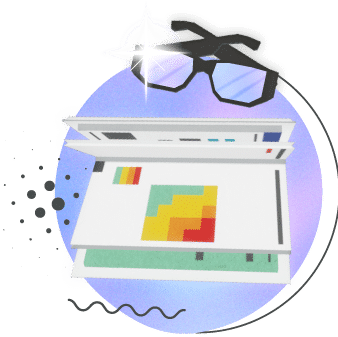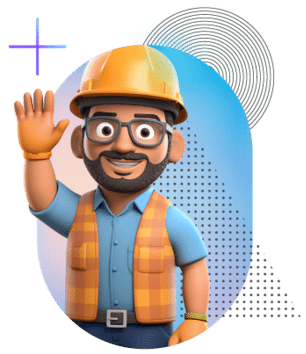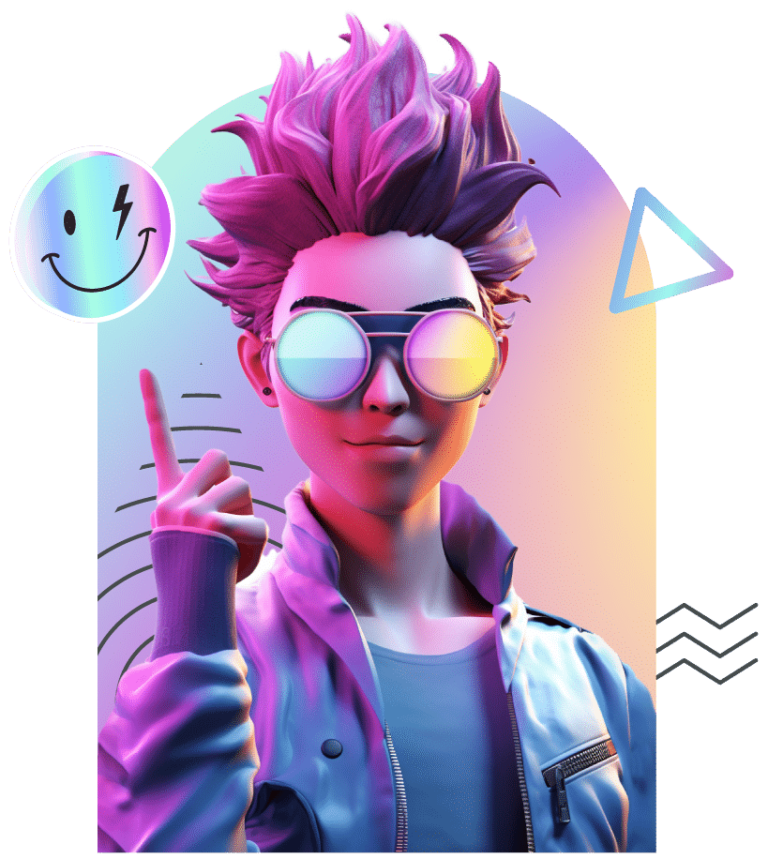The Activate Studio team have crafted incredibly magical worlds using virtual reality. With foundations in film, theatre, animation and UX design, our team can tackle any virtual challenge.

We took our first step into the world of virtual reality with Suzuki and the launch of the Jimny, taking customers on a 4×4 adventure without leaving the trade show. We were soon summoned by the Gold Coast City Council, and using our VR wizardry, created an immersive gamified experience where new team members could safely learn how to pre-check a vehicle or perform a site inspection – all without ever leaving the comfort of their office chair.
More recently we teamed up with with Connect Northern Rivers, where we used the power of virtual reality to create gamified experiences that help young people kickstart their careers in construction or hospitality. This beautifully crafted experience allow teenagers who have never stepped foot into a work place, take their first step in a safe and controllable environment.


As the human race begins to enter the metaverse and AI is doing my SEO, Activate Studios is there to help bring to life the craziest of ideas. Anything is now possible, what we build next is up to you.
If you’re wondering what the heck is VR, don’t worry, you’re not alone. Let us enlighten you.
Virtual Reality (VR) is a technology that allows users to immerse themselves in a computer-generated environment, making them feel like they are physically present in a different world. It typically involves the use of a headset or other wearable device that tracks the user’s movements and translates them into actions within the virtual environment.
Or, to put it another way, VR is like a magical gateway that transports you to a whole new world, without ever leaving the comfort of your own reality. It’s like having a personal teleporter that takes you to another dimension, where anything is possible.
We create mind-blowing experiences that make your world a little more surreal. We bring your ideas to life through the lens of VR, creating interactive and immersive experiences that are truly out of this world.
Whether you’re looking to explore new frontiers, train for high-pressure situations, or just escape into a world of fantasy, VR is the way to go. It’s like having a portal to infinite possibilities.
Let us help you harness the power of VR and take your ideas to the next level. With our expert team of VR magicians, the possibilities are limitless. Let’s make your world a little more virtual, one pixel at a time.
Our team of skilled and experienced developers, screen-credited film producers, and VR experts can help you leverage the latest VR technology to create immersive experiences that engage and delight your audience. Early adopters at the time, and now global leaders in our field, we are experts in VR software and hardware.
We are an award winning AR/VR Australian production company with Brisbane headquarters. We use computer generated environments to immerse users and identify hazards (Working at Heights) or integrating 360 video and actors to transport users into real-world locations (Visit Brisbane) and scenarios such as hospitality and construction.
We are active participants in the advancement, research and development of VR & AR through our own philanthropic projects (R.E.M.I.) and scholarships (Activate Studios Scholarship) in partnership with leading universities such as Griffith University (teaching empathy to young people) and Queensland University of Technology with MedAugment.
We have been trusted by global brands such as Suzuki (What’s in the Box?) and Lendlease (Sunshine Plaza Shopping Centre), and by government to take this technology into classrooms and educate the future generations (the Create Queensland Regional Roadshow).
We constantly push boundaries by leveraging cutting-edge technology to craft breathtaking immersive experiences and our commitment to using technology for good ensures that your VR experience is not only visually stunning but has a positive social and environmental impact.
Virtual reality is a rapidly evolving technology that is transforming the way we experience the world. At Activate Studios, we are at the forefront of this revolution, utilizing cutting-edge VR headset technology to create immersive and engaging experiences for our clients.
Our team of skilled and experienced developers and screen-credited film producers are constantly pushing the boundaries of what is possible in VR content creation. We specialize in creating VR experiences for education, gaming, marketing, tourism, training, and tech for good.
Our expertise in integrating VR solutions into existing apps and projects has helped numerous clients enhance their digital offerings and engage with their audiences in new and exciting ways. From custom VR headsets to mobile app integration, we offer a full range of VR services that can be tailored to your unique needs and goals.
We stay up-to-date with the latest advancements in VR headset technology, including features like higher resolution displays, improved tracking and motion controls, and increased processing power. Our commitment to using the best VR technology available allows us to deliver high-quality, unforgettable VR experiences that leave a lasting impression on our clients and their audiences.
Partner with Activate Studios and experience the power of VR technology for yourself. Contact us today to learn more about our VR production services and how we can help bring your vision to life.
Virtual Reality (VR) technology has been making waves in the world of marketing, offering a new and exciting way to engage with consumers. With its ability to provide immersive experiences, VR has the potential to revolutionise the way companies advertise their products and services.
One example of the use of VR technology in marketing is providing virtual product demos. Companies can use VR to give consumers a virtual tour of their products, allowing them to explore and interact with them in a way that is not possible with traditional marketing methods. This can help consumers make informed purchase decisions and can enhance their overall brand experience.
Another example is the use of VR for virtual events and activations. With the rise of remote work and social distancing, many companies are turning to virtual events to connect with their customers. VR technology can provide a fully immersive experience for attendees, allowing them to interact with the brand in a unique and memorable way. This can help to build brand loyalty and drive sales.
Virtual Reality can also be used to create brand awareness by creating engaging and shareable content. Brands can create VR experiences that are not only entertaining but also educational, providing valuable information to consumers about their products and services. This can help to position the brand as a thought leader in their industry and increase brand recognition.
In addition, VR can also be used to enhance customer service experiences. Companies can create virtual support centers that allow customers to receive personalized assistance in a virtual environment. This can help to streamline the support process and improve customer satisfaction.
As VR technology continues to advance, its potential in the world of marketing will only continue to grow. By providing immersive and engaging experiences, VR can help companies connect with consumers in a way that is not possible with traditional marketing methods.
As the world of education continues to evolve, Virtual Reality (VR) technology has emerged as an innovative tool for delivering immersive and engaging learning experiences. With VR, students can experience subjects in a whole new way, allowing them to gain a deeper understanding and appreciation of the material.
One of the primary benefits of using VR in education is the ability to create interactive and immersive experiences that allow students to explore and engage with educational content in new and exciting ways. For example, students can take virtual field trips to historical sites or travel to different parts of the world to learn about different cultures and environments.
In addition, VR can be used to create simulations that allow students to practice skills and scenarios in a safe and controlled environment. This can be particularly useful in fields such as healthcare, where VR can be used to train students in medical procedures and surgeries without the risk of harming real patients.
Moreover, VR can also be used to provide personalized learning experiences, catering to individual students’ learning styles and abilities. This can help to improve engagement and retention, as well as provide opportunities for students to learn at their own pace.
Overall, Virtual Reality technology has the potential to revolutionise education by providing new and innovative ways to engage with educational content, enhance learning outcomes, and promote a deeper understanding and appreciation for the world around us.
Virtual reality (VR) technology has rapidly advanced in recent years, and as a result, it has become an important tool for training across industries. VR provides a unique opportunity to simulate real-world scenarios and situations, allowing for practical training in a safe and controlled environment. Here’s how VR is being used for training in various industries:
Healthcare Medical professionals use VR simulations to practice surgical procedures, allowing them to refine their skills and techniques in a risk-free environment. It also enables them to perform surgeries remotely.
Manufacturing VR technology has been used to train factory workers in various industrial scenarios, from assembling parts to operating heavy machinery. This helps to reduce accidents and improve efficiency.
Military The military has been using VR technology for many years to simulate combat situations and train soldiers in a safe environment. It is also used for training in other areas, such as vehicle and equipment maintenance.
Aviation Pilots and aviation professionals use VR simulations to practice flying in various conditions, such as turbulence, wind shear, and other challenging situations. This helps to improve their decision-making skills and ability to handle emergencies.
Customer Service Companies are now using VR technology to train customer service representatives in handling difficult customers, product demonstrations, and other scenarios. This helps to improve customer satisfaction and retention rates.
Overall, VR is revolutionizing the training industry, providing a cost-effective and practical way for organizations to train their employees in a safe and controlled environment. It enables employees to learn by doing, which is more effective than traditional classroom-style training. As VR technology continues to evolve, it’s likely that it will become an increasingly important tool for training across various industries.
Virtual reality (VR) technology has revolutionized the gaming industry, creating a more immersive and engaging experience for players. With VR headsets and motion controllers, players can enter a whole new world and interact with it in ways that were previously impossible.
VR gaming has come a long way since the first consumer VR headset was released in 2016. Today, there are a variety of VR games available across multiple platforms, from casual mobile games to high-end PC and console games.
One example of a successful VR game is Beat Saber, a rhythm game that tasks players with slicing through blocks to the beat of a song. The game has sold over 10 million copies and has become a fan favorite in the VR gaming community.
Another popular VR game is Half-Life: Alyx, a first-person shooter that takes place in the Half-Life universe. The game has received critical acclaim for its immersive gameplay and innovative use of VR technology.
But VR gaming isn’t just about entertainment. It also has the potential to be used for educational purposes. For example, the game Job Simulator allows players to simulate working in different jobs, providing a fun and interactive way to learn about different professions.
As VR technology continues to improve, so too will the possibilities for VR gaming. With advancements in haptic feedback and motion tracking, players can expect even more realistic and engaging experiences in the future.
For those interested in VR gaming, there are a variety of VR headsets available on the market, from the popular Oculus Quest 2 to the high-end Valve Index. With the right equipment, players can immerse themselves in a whole new world of gaming.
As VR gaming continues to grow, it presents exciting opportunities for both gamers and developers alike. Whether you’re a fan of first-person shooters, puzzle games, or casual experiences, there’s something for everyone in the world of VR gaming.
Virtual Reality (VR) has revolutionized the way we interact with technology, from gaming to education and marketing. But the question remains: how much does it cost to create these immersive experiences?
The cost of creating VR experiences can vary greatly depending on the complexity of the project. Factors that can affect the cost include the level of interactivity, the quality of the graphics, the length of the experience, and the number of platforms it needs to be developed for.
For example, a simple VR experience that consists of a single 360-degree video can cost anywhere from $5,000 to $15,000. However, a more complex experience that involves custom 3D graphics, interactive elements, and multiple platforms can cost upwards of $100,000 or more.
Despite the high cost, many companies and industries are investing in VR experiences. Gaming companies are creating immersive and interactive VR games, while educational institutions are using VR to create unique and engaging learning experiences. Companies in industries such as real estate, tourism, and retail are using VR to showcase products and services in a new and innovative way.
The cost of creating VR experiences may seem daunting, but the potential benefits are immense. The level of engagement and immersion that VR provides can lead to increased brand awareness, higher customer satisfaction, and ultimately, increased revenue.
To ensure a successful VR project, it is important to work with a skilled and experienced VR production company that can guide you through the process and provide a clear understanding of the costs involved. By doing so, you can create a VR experience that meets your business objectives while staying within your budget.
In conclusion, while the cost of creating VR experiences can be high, the potential rewards are worth the investment. With VR technology continuing to evolve and improve, now is the time for companies to embrace this cutting-edge technology and create unforgettable experiences for their audiences.
As technology continues to evolve, businesses are exploring new ways to engage customers and enhance their operations. Two emerging technologies that have gained significant attention in recent years are augmented reality (AR) and virtual reality (VR). While both AR and VR are immersive technologies that offer unique experiences, there are some key differences between them. In this blog post, we’ll explore what sets AR and VR apart.
AR technology overlays digital information on top of the physical world, creating an interactive experience. Users can interact with virtual objects in their real-world environment, typically through the use of a smartphone or tablet. AR is often used for marketing and advertising, allowing customers to see how products would look in their homes or to provide additional information about a product.
On the other hand, VR technology creates a completely immersive digital environment, often through the use of a headset or other wearable device. Users are completely immersed in a digital world and can interact with virtual objects and other users. VR is often used for gaming, education, and training.
One of the main differences between AR and VR is the level of immersion. AR technology adds digital information to the physical world, while VR technology creates a completely digital environment. AR is typically less immersive than VR, but it offers the advantage of allowing users to remain aware of their surroundings.
Another difference is the type of experiences that AR and VR offer. AR is often used for practical applications, such as providing information about a product or allowing customers to visualise how a product would look in their home. VR is often used for entertainment and educational purposes, such as gaming or simulating real-world scenarios.